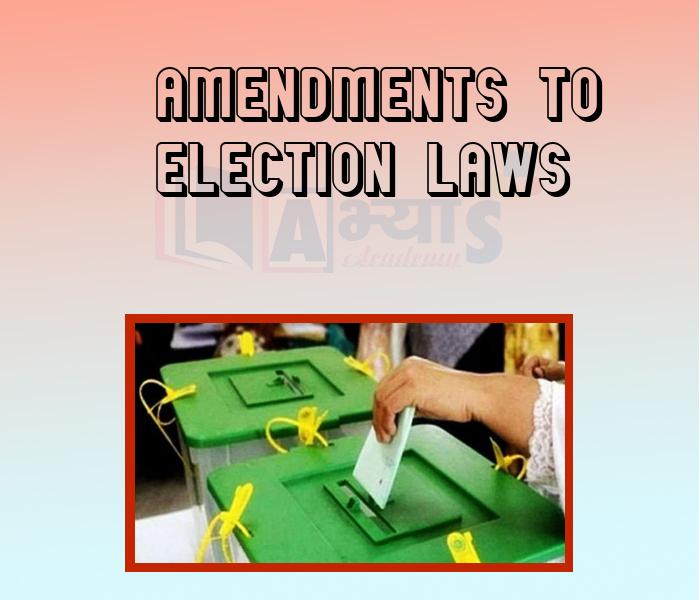Amendments to Election Laws

Amendments to Election Laws
The Parliament on 22 March 2003 enacted the Election Laws (Amendment) Act, 2003 and Conduct of Elections (Amendment) Rules, 2o03 which came into force with effect from 22 September 2003. By these amendments in the Act and Rules, those service voters belonging to the Armed Forces and members belonging to a Force to which provisions of the Army Act applies, have been provided the facility to opt to vote through proxy. Such service voters who opt to vote through proxy have to appoint a proxy in a prescribed format and intimate the Returning Officer of the constituency.
The Election and Other Related Laws (Amendment) Act, 2003 was enacted in 11 September 2003. By this amendment, new Section 29B and 29C were inserted in the Principal Act providing for contribution by any person or company other than a Government company to political parties, subject to the condition that any contribution in excess of Rs. 20,000 shall be reported to the Election Commission for any for Tax relief under the Incorne Tax Act, 1961. The Act also inserted Part A (Section 78A and regarding supply of copies of electoral rolls and certain other items to candidates of recognized political parties.
Which of the following are correct : (a) The first Municipal Corporation of India was established in Madras. (b) The Government of India Act 1919 made a clear provision in relation to Urban Administration. (c) Lord Ripon is called 'The Father of Local Self-Government in India.' | |||
| Right Option : C | |||
| View Explanation | |||
Which of the following are correct : (a) The Municipal Bill was introduced in the Lok Sabha in 1991. (b) The Municipal Bill was passed as the 74th Constitutional Amendment Act. (c) The Municipal Bill was implemented from 1 June 1990. | |||
| Right Option : B | |||
| View Explanation | |||
The __________________________ Amendment of the Constitution is concerned with the body of urban local governance i.e. municipal. | |||
| Right Option : D | |||
| View Explanation | |||
Students / Parents Reviews [10]
My experience with Abhyas academy is very good. I did not think that my every subject coming here will be so strong. The main thing is that the online tests had made me learn here more things.

Hiya Gupta
8thAbout Abhyas metholodology the teachers are very nice and hardworking toward students.The Centre Head Mrs Anu Sethi is also a brilliant teacher.Abhyas has taught me how to overcome problems and has always taken my doubts and suppoeted me.

Shreya Shrivastava
8thAbhyas Methodology is very good. It is based on according to student and each child manages accordingly to its properly. Methodology has improved the abilities of students to shine them in future.

Manish Kumar
10thOne of the best institutes to develope a child interest in studies.Provides SST and English knowledge also unlike other institutes. Teachers are co operative and friendly online tests andPPT develope practical knowledge also.

Aman Kumar Shrivastava
10thA marvelous experience with Abhyas. I am glad to share that my ward has achieved more than enough at the Ambala ABHYAS centre. Years have passed on and more and more he has gained. May the centre flourish and develop day by day by the grace of God.

Archit Segal
7thIt has a great methodology. Students here can get analysis to their test quickly.We can learn easily through PPTs and the testing methods are good. We know that where we have to practice

Barkha Arora
10thI have spent a wonderful time in Abhyas academy. It has made my reasoning more apt, English more stronger and Maths an interesting subject for me. It has given me a habbit of self studying

Yatharthi Sharma
10thMy experience with Abhyas is very good. I have learnt many things here like vedic maths and reasoning also. Teachers here first take our doubts and then there are assignments to verify our weak points.

Shivam Rana
7thAbhyas is a complete education Institute. Here extreme care is taken by teacher with the help of regular exam. Extra classes also conducted by the institute, if the student is weak.

Om Umang
10thIt was good as the experience because as we had come here we had been improved in a such envirnment created here.Extra is taught which is beneficial for future.










